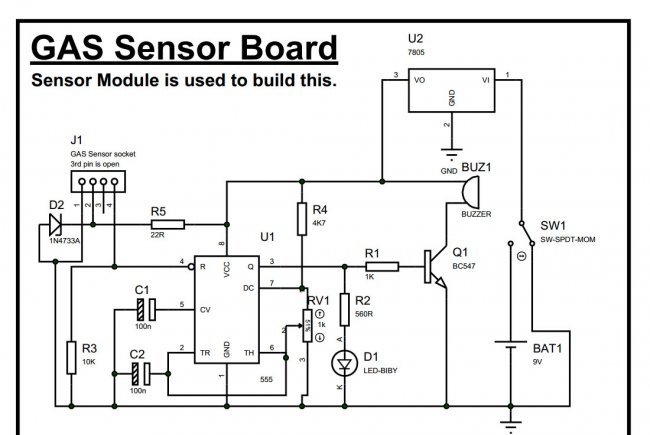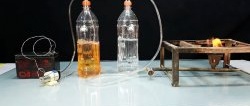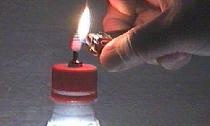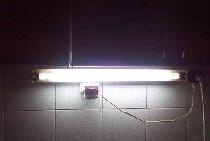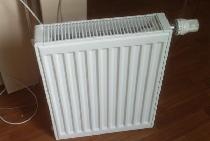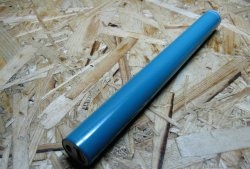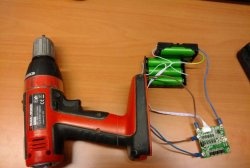DIY gas leak sensor
Hi all! In this article I will tell you how to make a simple gas leak sensor with your own hands from available parts.
Probably, now even any schoolchild knows that such a dangerous gas as methane has no odor, and it is simply impossible to detect it in the air without special instruments. Methane is the main component of natural gas. Methane is the same gas that flows through pipes and in your home, with the slight change that odorous additives are specially added to it so that it can be detected by humans using the sense of smell.
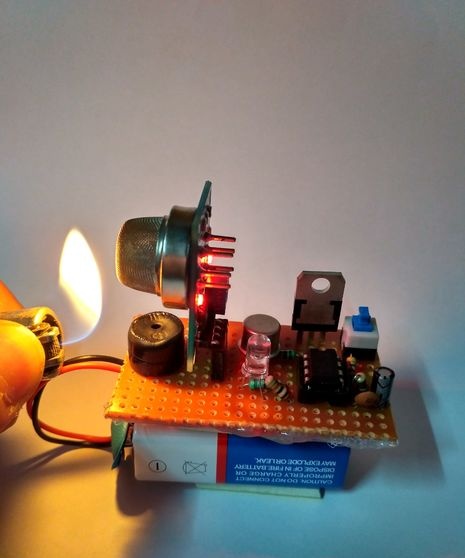
But if you can smell it, then why make a sensor, you ask? The fact is that a person can smell an already dangerous concentration of gas. The sensor has higher sensitivity. And if there is a small gas leak in the room for several hours, this concentration may not have an odor, but there will be a 100% danger of explosion. To avoid this and detect small concentrations of gas in the air, gas presence sensors are used.
This, of course, is most likely a test project that shows the basic principle of working with a gas sensor, but no one in the future will stop you from improving it and making it a serious project.
I will provide a list of parts and materials that are needed to build our sensor. (Link to store)
1. Circuit board.
2. 9V battery and connector.
3. On/off button.
4. 7805 regulator.
5. Buzzer.
6. BC547 NPN transistor (any n-p-n structure will do).
7. Resistors and LEDs.
8. 555 IC timer.
9. Capacitors.
10. Gas sensor.
11. Other materials such as soldering iron, solder, flux and wires.
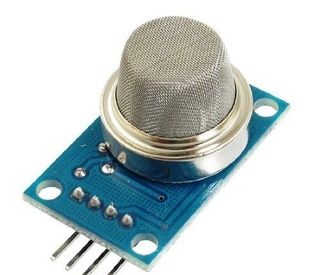
So let's start setting up this project!
The scheme is quite simple. Its heart is the MQ-02 gas sensor, but you can also use MQ-05, MQ-04 sensors.

MQ-02 – propane, methane, alcohol vapor, hydrogen, smoke react. The MQ-02 gas sensor is a complete module. It has an amplifier and a variable resistor on the board, with which you can adjust the sensitivity.
My circuit consists of a multivibrator assembled on a “555” timer chip.
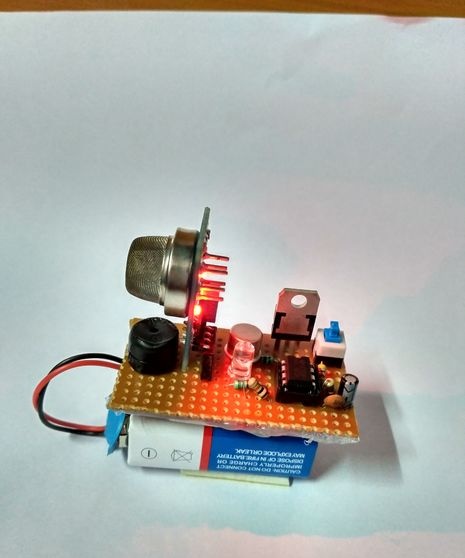
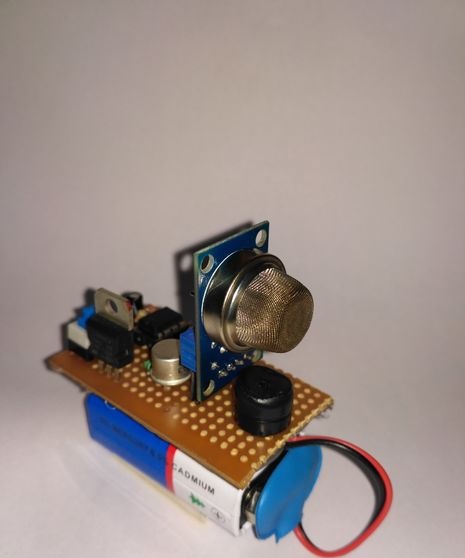
The work is simple: When a certain level is exceeded on the timer, the multivibrator at the output of which is connected is triggered Light-emitting diode and a buzzer with a built-in generator. The signal sounds intermittently and flashes Light-emitting diode. The device is powered by a 9 volt battery, which is reduced to 5 volts through a stabilizer.
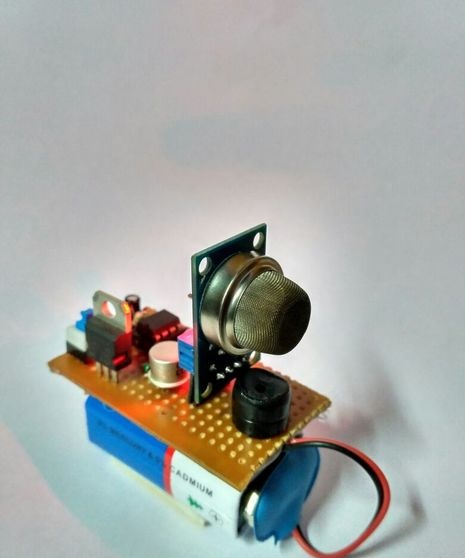
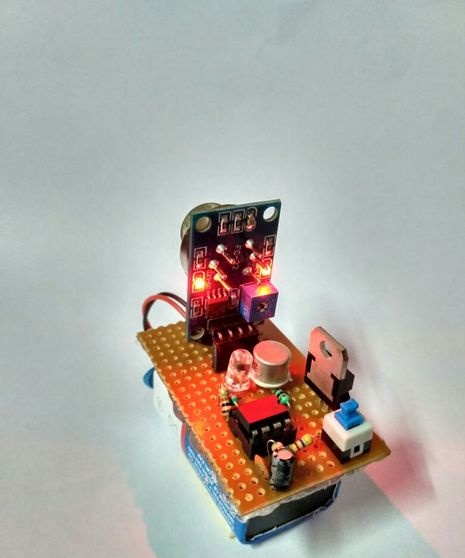

Probably, now even any schoolchild knows that such a dangerous gas as methane has no odor, and it is simply impossible to detect it in the air without special instruments. Methane is the main component of natural gas. Methane is the same gas that flows through pipes and in your home, with the slight change that odorous additives are specially added to it so that it can be detected by humans using the sense of smell.

But if you can smell it, then why make a sensor, you ask? The fact is that a person can smell an already dangerous concentration of gas. The sensor has higher sensitivity. And if there is a small gas leak in the room for several hours, this concentration may not have an odor, but there will be a 100% danger of explosion. To avoid this and detect small concentrations of gas in the air, gas presence sensors are used.
This, of course, is most likely a test project that shows the basic principle of working with a gas sensor, but no one in the future will stop you from improving it and making it a serious project.
I will provide a list of parts and materials that are needed to build our sensor. (Link to store)
1. Circuit board.
2. 9V battery and connector.
3. On/off button.
4. 7805 regulator.
5. Buzzer.
6. BC547 NPN transistor (any n-p-n structure will do).
7. Resistors and LEDs.
8. 555 IC timer.
9. Capacitors.
10. Gas sensor.
11. Other materials such as soldering iron, solder, flux and wires.

So let's start setting up this project!
The scheme is quite simple. Its heart is the MQ-02 gas sensor, but you can also use MQ-05, MQ-04 sensors.

MQ-02 – propane, methane, alcohol vapor, hydrogen, smoke react. The MQ-02 gas sensor is a complete module. It has an amplifier and a variable resistor on the board, with which you can adjust the sensitivity.
My circuit consists of a multivibrator assembled on a “555” timer chip.


The work is simple: When a certain level is exceeded on the timer, the multivibrator at the output of which is connected is triggered Light-emitting diode and a buzzer with a built-in generator. The signal sounds intermittently and flashes Light-emitting diode. The device is powered by a 9 volt battery, which is reduced to 5 volts through a stabilizer.



Similar master classes
Particularly interesting
Comments (6)

